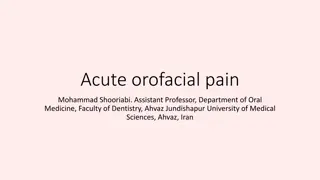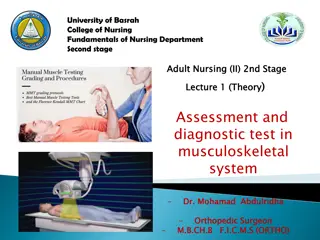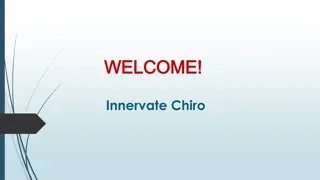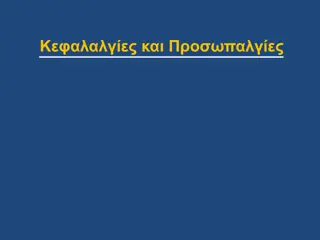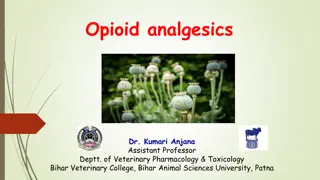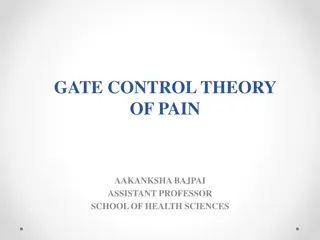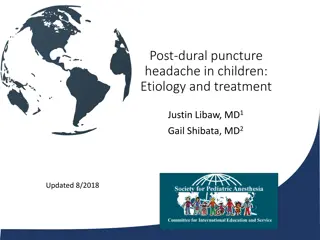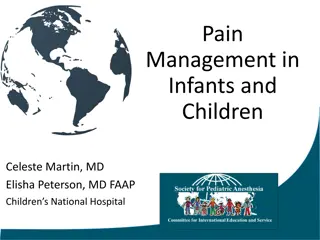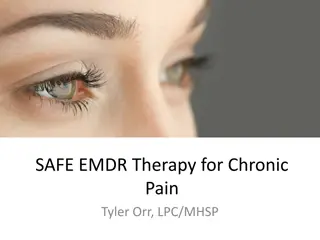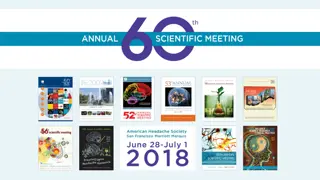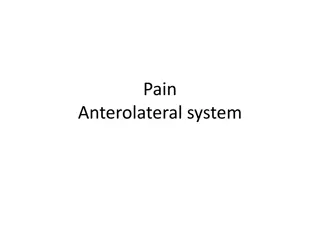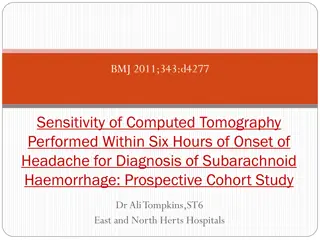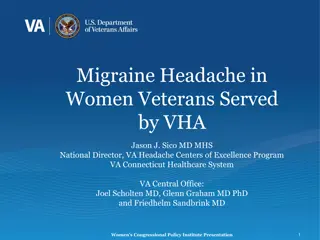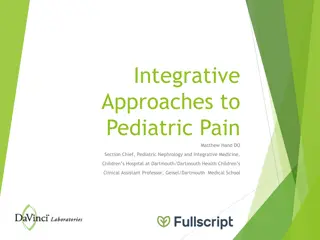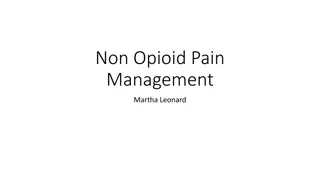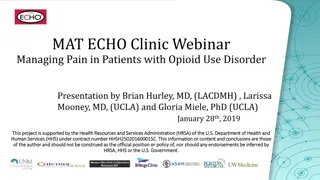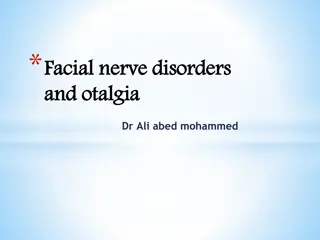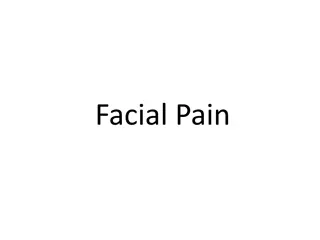
Practical Approach to Headache Diagnosis and Management
This comprehensive guide offers a practical approach to diagnosing and managing patients with headaches, covering causes, classification, management plans, and identifying red flags. It emphasizes the importance of history-taking and addresses primary and secondary headache syndromes.
Download Presentation

Please find below an Image/Link to download the presentation.
The content on the website is provided AS IS for your information and personal use only. It may not be sold, licensed, or shared on other websites without obtaining consent from the author. If you encounter any issues during the download, it is possible that the publisher has removed the file from their server.
You are allowed to download the files provided on this website for personal or commercial use, subject to the condition that they are used lawfully. All files are the property of their respective owners.
The content on the website is provided AS IS for your information and personal use only. It may not be sold, licensed, or shared on other websites without obtaining consent from the author.
E N D
Presentation Transcript
Aims To provide a practical approach to the diagnosis and management of patients presenting with headache
Objectives To be able to understand the causes of headache To be able to classify headaches, and facial pain in clinical practice To be able to organise a management plan for patients presenting with headache or facial pain To be able to identify headache that you can t miss
Headache 2.5 % of new emergency attendance 15 % will have a serious cause
Pain sensitive structures Dura Arteries Venous sinuses Para-nasal sinuses Eyes Tympanic membranes Cervical spine
Classification of headaches Primary headache Head Trauma CNS infection Vascular disease Intracranial pressure disorders Metabolic and toxins Malignant hypertension Dental, ENT & ophtalmological disorders
Primary headache Migraine - Cluster head ache Head Trauma Subdural/ extradural etc CNS infection Meningoenchephalitis Cerebral abscess
Vascular disease Subarachnoid haemorrhage (SAH) TIA/Stroke Subdural- extradural- intracerebral haemorrhage Arterial dissection Cerebral Venous sinus thrombosis (CVST) Giant cell arteritis (GCA) and vasculitis
Intracranial pressure disorders Tumours Idiopathic intracranial hypertension Intracranial hypotension Hydrocephalus Intermittent ( eg Colloid cyst)
History taking The most important step in the evaluation of headaches is HISTORY First question to answer is whether it is a PRIMARY or SECONDARY headache syndrome. Any important red flags in history or examination to consider investigation for a secondary headache
History Onset Frequency Periodicity Duration Time to maximum intensity Time of the day Recurrence One type or more than one headaches Life style
Autonomic Features Eyelid swelling/oedema Ptosis drooping Miosis Watering eye: Lacrimation Tearing Nasal congestion / Rhinorrhea runny nose Forehead and facial sweating
Migraine Aura 1/3 patients only ( mood change, excess energy euphoria to depression- lethargy and craving for food) Gradual onset no Thunderclap ! Examination generally normal Motor disturbances: weakness, hemiparesis and dysphasia
Minimum for migraine without aura > 5 recurrent episodes of headache attacks lasting 4- 72 hs With at least 2 of Unilateral Pulsating Moderate to severe Worsen by physical activity And at least 1 of Nauseas =/or vomiting Increase light sensitivity Increase noise sensitivity
Emergency treatment for severe migraine: Diclofenac (100mg) suppository or 75mgs IM or Subcutaneous Sumatriptan 6mgs - (if no triptan already taken) Metaclopramide IM N.B. OPIATES SHOULD BE AVOIDED
Prophylaxis Consider if 3 or more attacks per month or where attacks are very severe. Treat for at least 3 months Beta-blockers Propanolol 10 mg bd (increase gradually) Amitriptyline (10 100mgs
Migraine or cluster? Migraine Cluster Always unilateral Unilateral head ache in 70% Duration 4 hs 3-4 days Attack average 1 h 4 hs Intermittent Daily multiple attacks per day for weeks Avoid movement - lie down Rest does not improve the symptoms More agitated pacing May have autonomic symptoms Autonomic symptoms At least 1 of nauseas photophobia phonophobia May have photophobia phonophobia Female > male Male > Female
Tension headache Muscle contraction precipitated by stress/anxiety 20-40 years Female/male 3:1 Pressure sensation or pain As head is going to explode Burning or stabbing Daily increasing through the day Forehead to occip. or neck or vice versa
Other common headaches Sinusitis Glaucoma Hyponatraemia Toxins: alcohol excess and withdrawal, caffeine withdrawal. Drugs: calcium channel blockers and nitrates Coital migraine
Red flags for secondary headaches Systemic symptoms ( fever weight loss) or Secondary risk factors: systemic disease, cancer or HIV Neurological symptoms +/- abnormal signs ( confusion, impaired alertness or consciousness and focal sign) Onset: sudden, abrupt or split of a second or worsening and progressive Older new onset and progressive headache specially in middle age, > 50 years ( giant cell arthritis) Previous headache history first headache or different ( significant change in attack frequency, severity or clinical features Triggered Headache by Valsalva, exertion or sexual intercourse
Things you cant afford to miss Acute SAH CVT Temporal arthritis See full size image
Things you cant afford to miss Meningitis Tumours
Bacterial Meningitis High level of suspicious if fever and altered consciousness!!! Acute bacterial meningitis is an important fatal medical emergency- early recognition saves lives!! quick initiation of antibiotics Confirm diagnosis & pathogen with CSF analysis via lumbar puncture Still obtain CSF even if antibiotics commenced eg Polymerase Chain Reaction (PCR) for bacteria DNA
Subarachnoid haemorrhage Commonest potentially life threatening acute severe headache 1-3% headaches presenting to A&E 1/3 present with acute onset of severe headache as only symptom! Headache characteristics - Acute or Abrupt Thunderclap Worse ever : more likelihood Transient lost of consciousness or epileptic seizure
CT Brain ( sensitivity decreases with time) First 12 hs 96 100% Within 24 hs Within 48 hs At 5 days At 7 days After 2 weeks After 3 weeks 92 95 % 86 % 58 % 50 % 30 % almost nil
Chronology of CSF abnormality in CSF 12 hs should elapse before CSF analysis for xanthochromia Red cell lysis in the CSF to billirubin and oxyhaemoglobin Xanthochromia reliably present >12 hs and up to 2 weeks of SAH
Giant Cell arthritis Affects large/medium size arteries Microscopically infiltration of lymphocytes, macrophages, histiocytes and multinucleates giant cells Vessel are tender, red, firm and pulsless with scalp sensitivity Risk of blindness if not treated
Presentation Rare before 50 Female > male Insidious onset Often associated with jaw claudication on chewing Headache localised to the superficial occipital or temporal arteries, throbbing and worse at night Raised CRP and ESR Diagnostic biopsy with in 2 weeks Prednisolone 60 mg
Cerebral Venous Sinus Thrombosis Acute/ subacute progressive headache plus syndrome Papilloedema Symptoms of raised ICP VI nerve palsy Focal signs Seizures Enchephalopathy Acute Thunderclap SAH like presentation CT ve, CSF negative -Consider specially if raised CSF OP New daily persistent headache
CVST: appropriate investigations D-Dimer level? Abnormal in 96% with enchephalopathy Normal in with isolated headache Brain MRI/MRV Sinus occlusion Venous haemorrhage Venous infarction CT venogram
CVST: management- anticoagulation Low molecular weight heparin or IV Heparin 3-6 months Warfarin Thrombolysis? Treatment of comorbidities, seizures and increased Intracranial pressure Consider Anticardiolipin anibodies, Thrombotic & Homocystein screen, Cancers, CNS and ENT infection Systemic inflammatory disease/Behcets
Facial pain Typical Neuralgias 1) Trigeminal neuralgia Characterized by recurring paroxysmal severe pain, brief duration (seconds) in the territory of the trigeminal nerve, spontaneously or initiated by chewing, talking, touching the affected side of the face. Unknown aetiology Females affected more than males Analgesics, surgery, destruction of the sensory neuron, division of nerve root.
Trigeminal Neuralgia - Treatment Carbamazepine Gabapentin Baclofen Phenytoin Valproate Adjuvant TriCyclic Antidepressants NSAIDs Surgery for refractory cases
Facial pain Typical Neuralgias 2) Glossopharyngeal neuralgia Unknown cause Equal both sexes Severe, sudden episodes of pain in the tonsil region one side only, ipsilateral ear. Pain - severe for 1-2 hours, recur daily Treated like trigeminal
Symptomatic Neuralgias Intracranial lesions 1) Central lesions Tumours of the brain stem, M.S., thrombotic lesions, metastasis, occult naso-pharyngeal ca. 2) Post herpetic neuralgia Herpes zoster may affect trigeminal nerve ganglion Vesicular rash covers one division, usually 1st division.
Post-Herpetic Neuralgia Persistent neuritic pain for > 2 months after acute eruption Treatment Anticonvulsants TCAs Baclofen
Symptomatic Neuralgias Extracranial lesions 1) Sinus disease Infective and neoplastic lesions of the paranasal sinus. Facial pain & dental pain.. 2) Dental neuralgia Dental carries Dental extraction 3) Temporomandibular joint pain
Temporomandibular Disorders Symptoms Temporal headache Earache Facial pain Trismus Joint noise
Carotid dissection A hemorrhage into the wall of the carotid artery, separating the intima from the media and leading to aneurysm formation. Suspect in Blunt trauma? Post RTA Rotational forces? Manipulation Spontaneous
Acute Cervical arterial dissection Internal carotid artery dissection (ICAD) Unilateral headache/face pain + neck +/- Contra lateral stroke or TIA Vertebral artery dissection (VAD) Occipital-nuchal headache +/- posterior circulation TIAs
Cervical Art Dissection Investigations MRI Brain and neck & MRA (Carotid & vertebral) Crescent shaped intramural haematoma & vessel occlusion Identifies ischemic brain tissue > clearly CT brain & CTA of cervical vessels Tapering lumen, vessel occlusion Rarely Catheter angiogram Intimal flap +/- double lumen path gnomonic seen in <10 %
Management of carotid artery dissection Get advice from Neurology and Vascular Surgeons Aspirin vs anticoagulation 3-6 month therapy
Conclusions Remember that history is the most important clue Describe a classification useful in clinical practice Primary headache Head Trauma CNS infection Vascular disease Intracranial pressure disorders Don t miss: Brain tumours, Giant arthritis, carotid dissection, meningitis and SAH ! (migraine cluster - tension)

